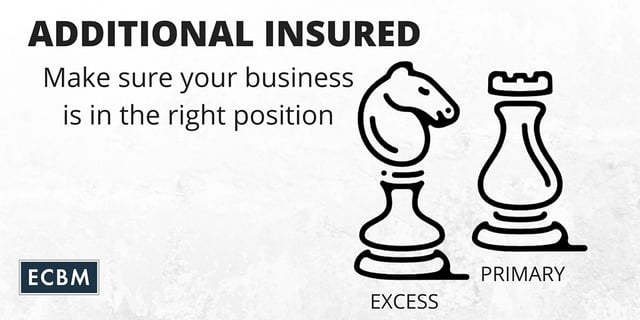
The change to insurance requirements in April 2013 wasn't exactly getting front-page coverage. The short-short version is this: business owners should reevaluate their standard contractual requirements to be sure that they call for the best coverage available.
Standard Lease, supplier, and service agreements usually contain hold harmless or indemnification provisions.
However, that protection can be limited. And it is only good as long as the party bearing the obligaion has the financial wherewithal to pay for it. Basically- you get what you ask for.
So- to add a level of protection under insurance policies you can create a list of Additional Insured entities.
Why Have An Additional Insured In The First Place?
Historically, businesses like Retailers and Restaurants would routinely encounter these issues in their dealings with their landlords, food suppliers, maintenance providers, manufacturers, and landlords. This is because landlords for instance, require their tenants to protect them against claims arising in the tenant's space- like an injury.
It had always been a good risk management practice to require anyone who your business does business with to take on liability for their work, products, or operations any time there was the opportunity to do so.However, since April of 2013, there are some important changes that businesses should consider:
- The insurance industry limited the amount of coverage an additional insured can obtain.
- It is important for you as a business to know this as the distribution of the new forms are not mandatory.
- Some carriers are even still using older versions that they will soon try to integrate into their customary practices.
It's too soon to say how these changes are impacting busiensses as these risks are not covered in a standard business liability insurance policy. However, the changes will take many people by surprise when they discover that they don't have the coverage that they thought had been requested from their insurance carrier.
READ MORE: ADVICE: GET THE D&O INSURANCE. YOU'LL BE GLAD YOU DID.
What's Different?
The new forms allow the language in your contract or agreement to govern the scope, extent and limit of coverage that the additional insured receives.
An Example:
Your business hires a snow removal contractor to clear the parking lot of your office. You require that this contractor to have $1 million of coverage and that they name you as an additional insured. If someone slipped in your icy parking lot, they will almost always pursue a claim against you.
- In the past, you could use the additional insured status to get be able to access the $1 million. Plus you would also be able to get higher limits after that first million through the contractor's excess policies.
- Now, your limit is just the $1 million you had requested.
How Could It Be Worse?
Unfortunately, limits are not the only thing that changed. If you go through the trouble of obtaining additional insured coverage- you would want for it to pay claims before your own policy.
In our previous example, you would want for the snow removal contractor to pay the claim BEFORE your business's insurance would have to pay.

Therefore, you would need to be sure that the contract required that the snow removal company's additional insured coverage would be the primary and your own insurance would only be tapped in the case of excess past the additional insured limits.
If your written agreements don't expressly contain this language, your own coverage would be the primary or would at best, would share the claim with the contractor.
Anything Else?
Finally, insurance carriers will only grant additional insureds the coverage that the state allows.
- At last count, about 10 states prohibit additional insured status for the additional insured's own negligence.
- Those states passed statutes that make it impossible for negligent parties to transfer the cost of their negligence to their business partners either under their contract or through an insurance arragement.

An Example:
If your maintenance contractor injures your customer, that customer might sue your company. In the past, you could use additional insured status to make the contractor pay for that lawsuit.
However, now if the customer alleges you were independently negligent- you may not have coverage for those allegations under your contractor's policy.
This new language makes it harder to cherry-pick state law to your benefit and limites your options when you are accused of negligence.
READ MORE: NLRB CHANGES DEFINITION OF JOINT EMPLOYER
Who Really Needs To Worry About This?
Any business owner who hires someone else, sells someone else's goods, or leases property is at risk for expensive surprises under these changes.
Existing contracts may not contain the proper language that triggers the coverage your need under today's insurance forms. This is especially true for long-term contracts like lease agreements.
Therefore, you should review your existing contracts and standard agreements with your risk management and insurance adviser to ensure your standard requirements follow today's best risk management practices.
Watch the video here:

